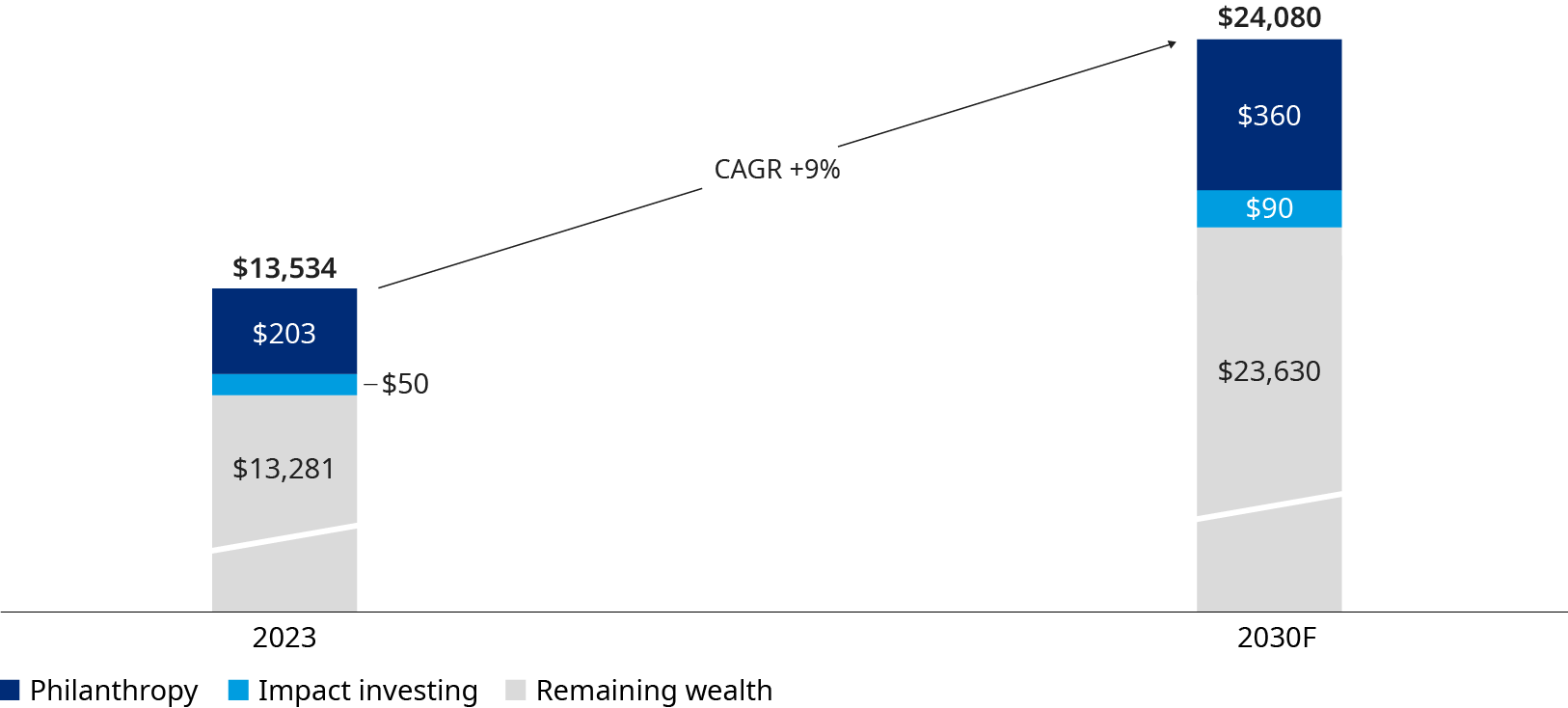As Asia has experienced significant economic growth and urbanization in the last few decades, social challenges specific to urban settings have also arisen. According to our latest research, environmental pollution, housing unaffordability, an aging population, youth mental health, and wealth inequality have emerged as the five major urban social challenges across Northeast Asia. These issues have grown in reach and severity, especially in the post-pandemic world.
While the public sector plays a crucial role in addressing these urban social issues, we have noticed growing engagement and interest from family-led capital in driving social impact for the communities that hold their legacy.
In March 2024, the Asian Venture Philanthropy Network (AVPN) and Social Ventures Hong Kong (SVhk), engaged Oliver Wyman as the Insights Partner to host a Family Impact Symposium 2024. The symposium gathered family foundations and to catalyze the social transformation journey by highlighting the unique role family-led capital can play in driving social change.
Following the insights from the discussions at the symposium and combined with findings from interviews with 10 social impact organizations that we conducted earlier this year, we have crafted a comprehensive playbook for families, social innovators, and impact-makers seeking to join forces and drive meaningful social changes in this space.
Evolving private family foundations in Northeast Asia drive social impact
Family-led capital has long been involved in social impact. Each family’s focus is unique, driven by their distinct objectives and values. In the symposium, 93% of family funds indicated they are willing to deploy more capital into this space in a year. When asked about the top urban social challenges families want to address, the three most prevalent themes are youth development and wellbeing (92%), climate action (77%), and aging well in cities (69%). These themes shed light on the diverse areas of interest.
In recent years, we have observed a shift in how families deploy social capital and participate in project execution. Most family foundations started their philanthropic activities purely as funders. In recent years, more families are eager to lead or support social projects more strategically and are increasingly keen to pursue impact investing. As aging founders pass their baton to the younger generation in the family, these young philanthropists are more hands-on in execution. They value “newer” social causes, such as arts and culture, the environment, and the community, and are more open to exploring how family capital can be used innovatively.
Looking ahead, we anticipate high-net-worth Northeast Asian families will demonstrate even greater generosity in their investments for social good, with an estimated allocation of up to US$450 billion of family wealth towards addressing social impact issues by 2030.
Implications for stakeholders on the rise of family-led capital in social impact
The rise of family-led capital in social impact represents a transformative shift in the landscape of philanthropy and impact investing. As high-net-worth families increasingly recognize their potential to drive meaningful impact, the implications extend far beyond their own philanthropic endeavors, with significant implications for various stakeholders, including social project owners, financial institutions, professional services firms, and the public sector:
- Independent nonprofits and social enterprises should actively pursue more strategic funding and partnerships with family-led capital for social programs. These organizations can attract more family capital deployment not only in funding but also with strategic support in networks and resources.
- Financial institutions will see a growing client base of family-associated capital that has demand for creating social impact. Seizing the opportunities and deepening the relationship with family accounts require banks, insurers, and asset managers to rethink the value propositions to this segment and develop the relevant networks and expertise.
- Professional services firms also have a significant role to play — wealthy families seeking to make a difference will require specialized advisory services in family philanthropy and impact investing. To meet this demand, these firms should invest in understanding families’ values and impact goals and provide valuable guidance and support to families in their pursuit of social impact.
- The rise of family-led capital presents a growing need for supportive policies and framework from the public sector and government agencies. Recognizing the potential of family-led capital in driving social development initiatives and creating an enabling environment for family engagement are crucial to the success of creating a collaborative ecosystem of meaningful impact.
Four steps for families to formalize their social impact strategy
1. Align social engagement with family values
Families should focus on social topics genuinely aligned with the family’s values. An aligned goal is critical to those inspired to start the impact journey.
2. Define own positioning in a social project
Addressing social issues is not easy and requires more advocacy to drive changes and attract talent. Depending on the nature of projects, families can consider participating purely as a funding provider or as project owners or even orchestrators to deliver more impact.

3. Seek out partnerships with other stakeholders
Families possess diverse expertise and may necessitate additional resources or experience when acting independently. Actively forging connections with other organizations, including both public and private stakeholders, can serve to amplify the efforts and deliver impact more effectively.
4. Measure impact for better-informed decision-making
While many families value the emotional sense of success that arises from addressing social issues and supporting the community, it is important to establish an oversight framework as the foundation or organization grows. A transparent but not overcomplicated framework can support families to make informed decisions and deploy capital with discipline, ensuring the long-term sustainability and effectiveness of their social impact efforts.




